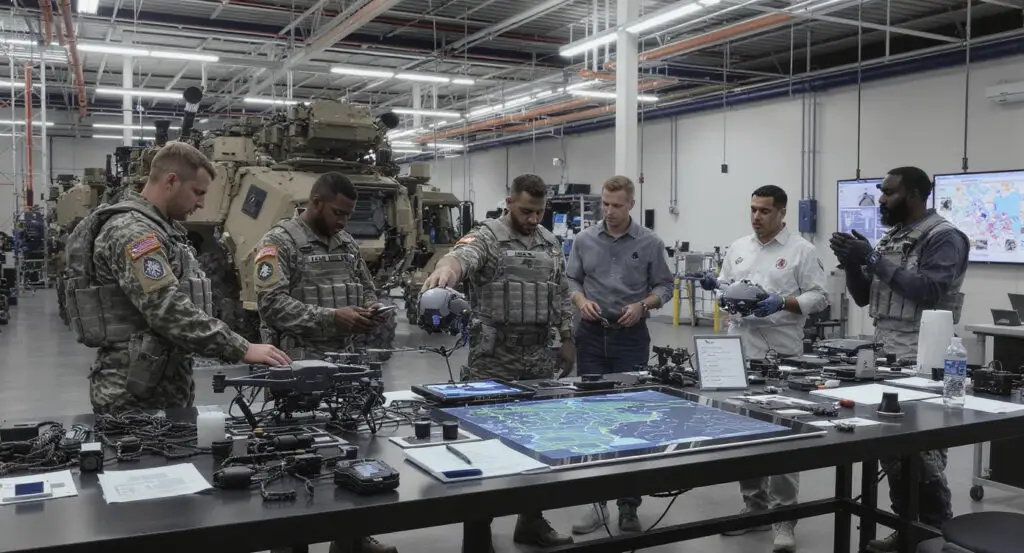Embracing a New Era of Military Innovation
The U.S. Army is undergoing a major technological evolution aimed at transforming both its battlefield capabilities and internal processes. By embracing proactive problem-solving and adaptive innovation, the Army seeks to respond to challenges faster and integrate both existing and emerging technologies in more effective ways. This modern approach was recently spotlighted by top military leaders and tech strategists, all advocating for more flexible, forward-thinking military systems.
Chris Manning, Deputy Assistant Secretary of the Army for Research and Technology, summarized this shift with a powerful line of questioning: “How do I solve a problem I didn’t know existed? Can I repurpose today’s tools to solve tomorrow’s problems?” This mindset sets the tone for a more agile, tech-driven military force.
Testing Future Technologies Through “Transformation in Contact”
A cornerstone of the Army’s innovation strategy is its “transformation in contact” initiative, which allows soldiers to test new tools directly in the field. Rather than relying solely on lab conditions or simulated environments, this program places developing technology directly into the hands of users.
Manning emphasized that this approach asks soldiers to think critically: “What can I use this for? How could it change the way we fight?” The result is faster feedback loops, real-time experimentation, and more relevant technology adaptation. It also fosters a culture of continuous learning within military ranks, encouraging soldiers to rethink how even existing tools can be applied in modern warfare.
Redefining Industry Collaboration with Broader Problem Statements
Brigadier General Anthony Gibbs of U.S. Army Futures Command explained that the Army is moving away from rigid procurement models. Instead, it now uses a more flexible “characteristics of needs” framework to communicate challenges to industry. This allows for innovative solutions that may not align with traditional defense categories.
However, Gibbs acknowledged that this broader outreach comes with challenges: “When we issue open-ended problem statements, we often receive solutions that fall outside our conventional expectations.” Still, this flexibility is vital to attract nontraditional players and disruptive ideas into the defense ecosystem.
Shifting from Internal Development to External Discovery
In a significant cultural shift, the Army is now encouraging teams to look outside the traditional defense industry for solutions. Manning noted, “Instead of always asking industry to solve our specific problems, we’re now asking what already exists and how we can apply it.”
This change supports rapid prototyping with soldiers in the field and leverages existing technology from commercial or adjacent sectors. The goal is to remain competitive by integrating usable, cost-effective solutions faster than adversaries. This mindset prioritizes speed, adaptability, and open collaboration with partners beyond the typical defense circles.
Turning Experimental Units into Scalable Models
Futures Command is actively working to take insights from individual brigades and divisions and apply them across the wider Army. Gibbs highlighted that much of the work to date has been done “one brigade and one division at a time,” but the intent is to move toward system-wide transformation.
The focus is now on developing clear pathways for successful technologies to scale from testing to full deployment. This ensures that innovation is not siloed but becomes part of a broader modernization strategy across all Army formations.
Building Interoperability Across a Modern Fighting Force
A major priority of this transformation is interoperability. The Army aims to ensure that newly integrated technologies work seamlessly across different units, command structures, and even allied forces. This unified approach enhances operational efficiency, improves readiness, and allows for smoother joint missions with global partners.
By focusing on standardization and cohesive tech integration, the Army strengthens its combat effectiveness across all mission types—from cyber defense to tactical engagements.
Future-Ready Force Built on Innovation and Agility
The U.S. Army’s technological transformation reflects a deep commitment to innovation, speed, and strategic adaptation. By empowering soldiers through real-world testing, engaging industry partners with flexible frameworks, and embracing nontraditional tech sources, the Army is reshaping its future combat readiness.
With scalable solutions and a renewed emphasis on interoperability, this transformation isn’t just about upgrading equipment—it’s about building a smarter, faster, and more connected military force capable of thriving in any global conflict scenario.
Read more: EU-U.S. Deal Fuels Rally in Tech Stocks, Says Analyst Amit Kukreja























